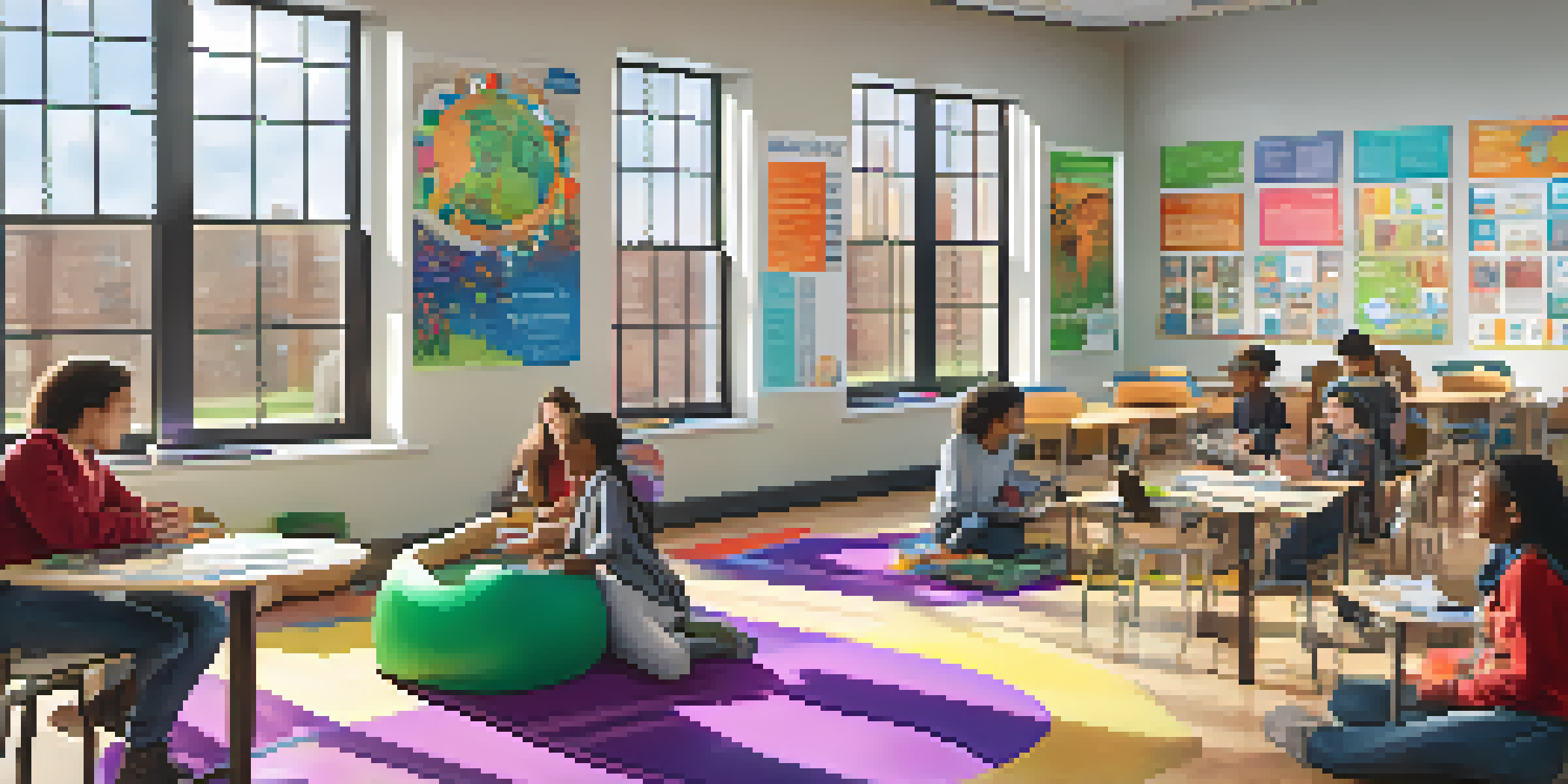Creating a Student-Centered Classroom Environment

Understanding the Student-Centered Approach
A student-centered classroom focuses on the needs and interests of students rather than the teacher's agenda. This approach encourages active participation, allowing learners to take charge of their education. By prioritizing student engagement, classrooms become more dynamic and responsive to individual learning styles.
Fostering a Positive Classroom Culture
Creating a positive classroom culture is essential for a student-centered environment. This involves building strong relationships among students and between students and teachers. When learners feel safe and respected, they are more likely to express themselves and participate fully in discussions.
Focus on Student Needs
A student-centered classroom prioritizes the interests and engagement of learners, making education more dynamic.
Encouraging Student Voice and Choice
Empowering students to make choices about their learning is crucial in a student-centered classroom. This could mean allowing them to select topics for projects or choose how they demonstrate their understanding. By giving students a voice in their education, you foster ownership and intrinsic motivation.
Incorporating Collaborative Learning Strategies
Collaboration is key in a student-centered classroom, encouraging students to work together and learn from each other. Group activities, peer mentoring, and team projects can enhance critical thinking and communication skills. These strategies not only build community but also prepare students for real-world interactions.
Encourage Collaboration
Collaborative learning strategies enhance critical thinking and communication skills while fostering a sense of community.
Utilizing Technology to Enhance Learning
In today's digital age, technology plays an important role in creating a student-centered environment. Interactive tools like online platforms and educational apps can cater to diverse learning needs and preferences. By integrating technology, teachers can create engaging learning experiences that resonate with students.
Designing Flexible Learning Spaces
The physical layout of a classroom can significantly impact student engagement. Flexible seating arrangements, such as bean bags or standing desks, can cater to various learning styles and comfort levels. A well-designed space encourages movement, collaboration, and creativity among students.
Leverage Technology Effectively
Integrating technology in the classroom enriches learning experiences and accommodates diverse student preferences.
Assessing Student Learning Formatively
Formative assessment is an ongoing process that allows teachers to gauge student understanding throughout the learning journey. Techniques like quizzes, discussions, and peer feedback help inform instruction and provide insight into student progress. This approach ensures that assessments are meaningful and supportive rather than punitive.
Reflecting on Practices for Continuous Improvement
Reflection is vital in a student-centered classroom, as it allows both teachers and students to evaluate their experiences. Regularly analyzing what works and what doesn’t fosters a growth mindset. By embracing reflection, educators can continuously adapt their practices to better meet the needs of their students.